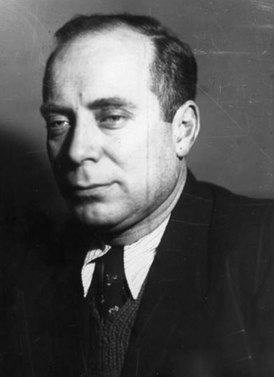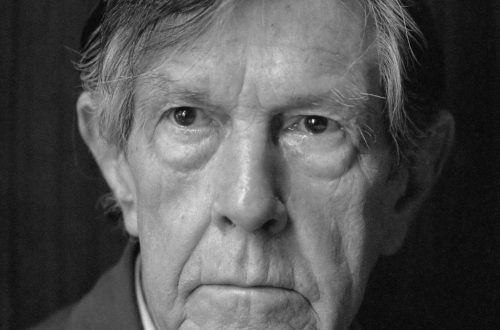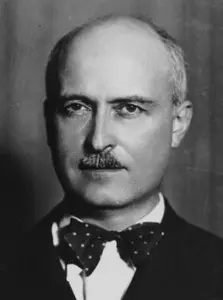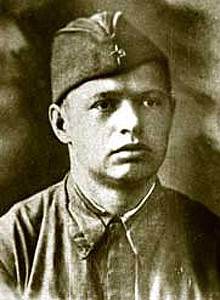
Eugen Arturovich Kapp |
Eugen Kapp
“Music is my life…” In these words E. Kapp’s creative credo is expressed in the most concise way. Reflecting on the purpose and essence of musical art, he emphasized; that “music allows us to express all the greatness of the ideals of our era, all the richness of reality. Music is an excellent means of moral education of people. Kapp has worked in a variety of genres. Among his main works are 6 operas, 2 ballets, an operetta, 23 works for a symphony orchestra, 7 cantatas and oratorios, about 300 songs. Musical theater occupies a central place in his work.
The Kapp family of musicians has been a leader in the musical life of Estonia for more than a hundred years. Eugen’s grandfather, Issep Kapp, was an organist and conductor. Father – Arthur Kapp, having graduated from the St. Petersburg Conservatory in organ class with Professor L. Gomilius and in composition with N. Rimsky-Korsakov, moved to Astrakhan, where he headed the local branch of the Russian Musical Society. At the same time, he worked as the director of a music school. There, in Astrakhan, Eugen Kapp was born. The boy’s musical talent manifested itself early. Learning to play the piano, he makes his first attempts to compose music. The musical atmosphere that reigned in the house, Eugen’s meetings with A. Scriabin, F. Chaliapin, L. Sobinov, A. Nezhdanova, who came on tour, constant visits to opera performances and concerts – all this contributed to the formation of the future composer.
In 1920, A. Kapp was invited as a conductor of the Estonia Opera House (somewhat later – a professor at the conservatory), and the family moved to Tallinn. Eugen spent hours sitting in the orchestra, next to his father’s conductor’s stand, closely following everything that was happening around. In 1922, E. Kapp entered the Tallinn Conservatory in the piano class of Professor P. Ramul, then T. Lembn. But the young man is more and more attracted to the composition. At the age of 17, he wrote his first major work – Ten Variations for Piano on a theme set by his father. Since 1926, Eugen has been a student at the Tallinn Conservatory in his father’s composition class. As a diploma work at the end of the conservatory, he presented the symphonic poem “The Avenger” (1931) and the Piano Trio.
After graduating from the conservatory, Kapp continues to actively compose music. Since 1936, he has been combining creative work with teaching: he teaches music theory at the Tallinn Conservatory. In the spring of 1941, Kapp received the honorable task of creating the first Estonian ballet based on the national epic Kalevipoeg (Son of Kalev, in libre by A. Syarev). By the beginning of the summer of 1941, the clavier of the ballet was written, and the composer began to orchestrate it, but the sudden outbreak of war interrupted the work. The main theme in Kapp’s work was the theme of the Motherland: he wrote the First Symphony (“Patriotic”, 1943), the Second Violin Sonata (1943), the choirs “Native Country” (1942, art. J. Kärner), “Labor and Struggle” (1944, st. P. Rummo), “You withstood the storms” (1944, st. J. Kyarner), etc.
In 1945 Kapp completed his first opera The Fires of Vengeance (libre P. Rummo). Its action takes place in the 1944th century, during the period of the heroic uprising of the Estonian people against the Teutonic Knights. At the end of the war in Estonia, Kapp wrote “Victory March” for brass band (1948), which sounded when the Estonian corps entered Tallinn. After returning to Tallinn, Kapp’s main concern was to find the clavier of his ballet Kalevipoeg, which remained in the city occupied by the Nazis. All the years of the war, the composer worried about his fate. What was Kapp’s joy when he learned that faithful people had saved the clavier! Starting to finalize the ballet, the composer took a fresh look at his work. He more clearly emphasized the main theme of the epic – the struggle of the Estonian people for their independence. Using original, original Estonian melodies, he subtly revealed the inner world of the characters. The ballet premiered in 10 at the Estonia Theatre. “Kalevipoeg” has become a favorite performance of the Estonian audience. Kapp once said: “I have always been fascinated by people who gave their strength, their lives for the triumph of the great idea of social progress. Admiration for these outstanding personalities has been and is looking for a way out in creativity. This idea of a remarkable artist was embodied in a number of his works. For the 1950th anniversary of Soviet Estonia, Kapp writes the opera The Singer of Freedom (2, 1952nd edition 100, libre P. Rummo). It is dedicated to the memory of the famous Estonian poet J. Syutiste. Thrown into prison by the German fascists, this courageous freedom fighter, like M. Jalil, wrote fiery poems in the dungeon, calling on the people to fight against the fascist invaders. Shocked by the fate of S. Allende, Kapp dedicated his requiem cantata Over the Andes for male choir and soloist to his memory. On the occasion of the XNUMXth anniversary of the birth of the famous revolutionary X. Pegelman, Kapp wrote the song “Let the Hammers Knock” based on his poems.
In 1975, Kapp’s opera Rembrandt was staged at the Vanemuine Theatre. “In the opera Rembrandt,” the composer wrote, “I wanted to show the tragedy of the struggle of a brilliant artist with a self-serving and greedy world, the torment of creative bondage, spiritual oppression.” Kapp dedicated the monumental oratorio Ernst Telman (60, art. M. Kesamaa) to the 1977th anniversary of the Great October Revolution.
A special page in the work of Kapp is made up of works for children – the operas The Winter’s Tale (1958), The Extraordinary Miracle (1984, based on the fairy tale by G. X. Andersen), The Most Incredible, the ballet The Golden Spinners (1956), the operetta ” Assol ”(1966), the musical“ Cornflower miracle ”(1982), as well as many instrumental works. Among the works of recent years are “Welcome Overture” (1983), the cantata “Victory” (at M. Kesamaa station, 1983), the Concerto for cello and chamber orchestra (1986), etc.
Throughout his long life, Kapp never limited himself to musical creativity. Professor at the Tallinn Conservatory, he trained such famous composers as E. Tamberg, H. Kareva, H. Lemmik, G. Podelsky, V. Lipand and others.
Kapp’s social activities are multifaceted. He acted as one of the organizers of the Estonian Composers’ Union and for many years was the chairman of its board.
M. Komissarskaya





